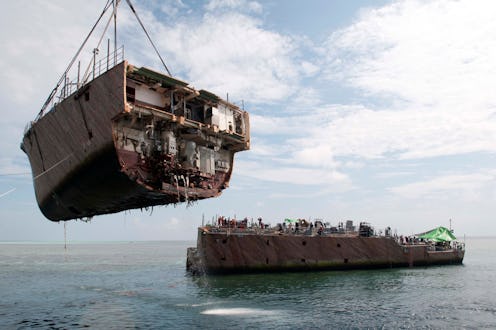News
How To Destroy 1,000 Tons Of Chemical Weapons
In order to get rid of the Syrian regime’s chemical weapons stash, the Obama administration is considering a rather spectacular-sounding plan: Taking the weapons out to sea and destroying them in international waters. It sounds somewhat audacious, but then again, destroying an entire country’s supply of chemical weapons is by definition audacious, as it’s never been done before, and the proposed plan could avoid some of the many, many hazards that come with such a monumental undertaking.
Under a deal brokered by Russia and the U.S., the most dangerous of Syria’s chemical weapons must be destroyed by the end of this year. That means getting rid of over 1,000 metric tons of deadly material in a little over a month, and the Obama administration has offered to take up some of that responsibility after several other nations, including Norway, Albania, and Belgium, declined to assist in the effort. Whether or not the plan proceeds is up to the Organization for the Prohibition of Chemical Weapons, an international organization with 190 member states tasked with managing the weapons disposal.
Here’s how it would work: A Virginia-based ship called the MV Cape Ray would be retrofitted to contain a Field Deployable Hydrolysis System (FDHS), technology developed earlier this year by the Pentagon to destroy chemical weapons in bulk. After mounting two mobile FDHS units on the Cape Ray, and training a crew to operate the technology, control of the ship would be transferred to the Defense Department’s Military Sealift Command from the Transportation Department, which currently owns the vessel. Once the chemical weapons were safely on board, Navy warships would escort it to international waters somewhere in the Mediterranean, where the weapons would be destroyed.
There are significant risks in the plan. For example, merely transporting the weapons from Syria to the U.S. ship will be a substantial undertaking, as will guarding the Cape Ray during the disposal process. A crew would have to undergo substantial training to operate the FDHS, which itself hasn’t yet been used in a real world situation. However, because no country has offered to allow the weapons to be disposed of on its own soil, officials see the international waters proposal as the most likely course of action.
